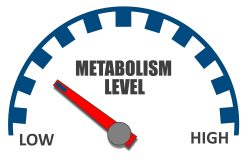Stem Cell Research to Treat Muscle Related Conditions
 Researchers who have previously discovered a method that turns skin cells into primitive like muscle cells that can be left in a lab indefinitely without losing their potential to turn into mature muscle, have now discovered how this method works and also what molecular changes it prompts within cells.
Researchers who have previously discovered a method that turns skin cells into primitive like muscle cells that can be left in a lab indefinitely without losing their potential to turn into mature muscle, have now discovered how this method works and also what molecular changes it prompts within cells.
MyoD gene expression that was added and exposed to 3 chemicals may cause skin cells to turn into primitive progenitors and maintained in a lab indefinitely. Later they can be coaxed into turning into mature muscle cells that can be used to treat muscle related diseases. Skin derived muscle progenitors are molecularly the same as muscle tissue stem cells. Muscle cells which are obtained by these progenitors tend to be more mature and stable than muscle cells that have been converted directly from skin cells.
The study by researchers at Massachusetts General Hosp. (MGH) could let clinicians generate muscle cells matched to patients to help treat a variety of muscle diseases and injuries such as muscle degeneration due to aging, muscular dystrophy and injuries to the muscles.
It is already known that the MyoD gene expresses muscle regulatory and can directly change skin cells into mature muscle cells. However, muscle cells that are mature do not self-renew and divide and cannot be propagated for purposes clinically. To tackle this shortcoming, the team developed a system a few years ago to to convert skin cells into self-renewing muscle stem like cells they coined induced iMPCs (induced myogenic progenitor cells). Their system utilizes MyoD combined with 3 chemicals they had previously identified as promoters of cell plasticity in other situations.
With the latest research the team uncovered the details as to how this combination converted skin cells into iMPCs. They discovered that while MyoD expression alone allows skin cells to become mature muscle cells, by adding the three chemicals caused the skin cells to acquire a more primitive stem cell like state. IMPCs are molecularly highly like muscle tissue stem cells and muscle stem cells from iMPCs are more mature and stable than muscle cells that have been produced with MyoD expression alone. Mechanically, they showed that MyoD and the three chemicals aid in removal of certain marks on DNA called DNA methylation. DNA methylation will typically maintain the identification of specialized cells and the team shows that its removal was key for acquiring an identity of a muscle stem cell.
The team’s findings may be applicable to a variety of other tissue types besides the muscles that have different regulatory genes. Through combining the expression of these genes with the three chemicals that were utilized in this particular study could help future research bring about different types of stem cells that closely bare resemblance to a variety of body tissues.
To view the original scientific study click below:
Dissecting dual roles of MyoD during lineage conversion to mature myocytes and myogenic stem cells



 Following a two year study of participants who ate a handful of walnuts every day showed lower levels of LDL(low density lipoprotein) cholesterol when compared with the participants levels at the start of the study. They also showed a reduced total cholesterol. The study was assisted from a grant by the Calfornia Walnut Commission.
Following a two year study of participants who ate a handful of walnuts every day showed lower levels of LDL(low density lipoprotein) cholesterol when compared with the participants levels at the start of the study. They also showed a reduced total cholesterol. The study was assisted from a grant by the Calfornia Walnut Commission. Recent research involving more than 30,000 heart patients has shown that becoming active in later life can be almost as beneficial to surviving as ongoing activity.
Recent research involving more than 30,000 heart patients has shown that becoming active in later life can be almost as beneficial to surviving as ongoing activity. If you are someone who makes mistakes or are forgetful when you are in a hurry, a recent study from Michigan State Univ. has discovered that meditation could help in becoming less prone to error. The team tested how meditation that focuses awareness on thoughts, feelings and sensations or open monitoring meditation, alters brain activity in such a manner that has suggested increased error recognition.
If you are someone who makes mistakes or are forgetful when you are in a hurry, a recent study from Michigan State Univ. has discovered that meditation could help in becoming less prone to error. The team tested how meditation that focuses awareness on thoughts, feelings and sensations or open monitoring meditation, alters brain activity in such a manner that has suggested increased error recognition. A new study has challenged what scientists in general believe about cognitive function including executive function, reasoning skills, and attention decline as people age. The new study has suggested that executive functioning and orienting actually improve with age.
A new study has challenged what scientists in general believe about cognitive function including executive function, reasoning skills, and attention decline as people age. The new study has suggested that executive functioning and orienting actually improve with age. Consuming a hot dog could actually cost a person 36 minutes of living a healthy life, while consuming a handful of nuts could help a person gain 26 minutes of an extra healthier life. A study looked at more than 5,800 foods and ranked them by the nutritional disease that can burden humans by their consumption and also the impact they make on our environment.
Consuming a hot dog could actually cost a person 36 minutes of living a healthy life, while consuming a handful of nuts could help a person gain 26 minutes of an extra healthier life. A study looked at more than 5,800 foods and ranked them by the nutritional disease that can burden humans by their consumption and also the impact they make on our environment.  A new study has shown that by staying very hydrated throughout your lifetime, you could be reducing your chance of developing heart failure. The study has suggested that keeping great hydration can possibly prevent or at the very least slow down changes that reside in the heart that ultimately lead to heart failure.
A new study has shown that by staying very hydrated throughout your lifetime, you could be reducing your chance of developing heart failure. The study has suggested that keeping great hydration can possibly prevent or at the very least slow down changes that reside in the heart that ultimately lead to heart failure. According to a new study from Binghamton Univ., just practicing meditation studies for eight weeks can make a person’s brain quicker. People all around the globe look for mental clarity by practicing meditation inspired by and/or following the age old Buddhism practices.
According to a new study from Binghamton Univ., just practicing meditation studies for eight weeks can make a person’s brain quicker. People all around the globe look for mental clarity by practicing meditation inspired by and/or following the age old Buddhism practices. It has been discovered through a recent study that people who consume 6-00 milligrams or 0.02 ounces of flavonoids each day had approximately a 20% decreased risk of cognitive decline over those who only consumed 150 milligrams or 0.005 ounces each day.
It has been discovered through a recent study that people who consume 6-00 milligrams or 0.02 ounces of flavonoids each day had approximately a 20% decreased risk of cognitive decline over those who only consumed 150 milligrams or 0.005 ounces each day. It is easy to remember the time when you could eat just about anything and not see weight gain. However, a recent study has suggested that your metabolism which is the rate your body burns calories, in reality peaks much earlier than has been thought and that its decline is later than is thought.
It is easy to remember the time when you could eat just about anything and not see weight gain. However, a recent study has suggested that your metabolism which is the rate your body burns calories, in reality peaks much earlier than has been thought and that its decline is later than is thought.